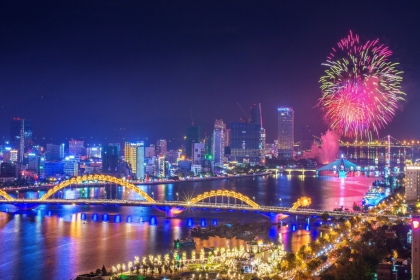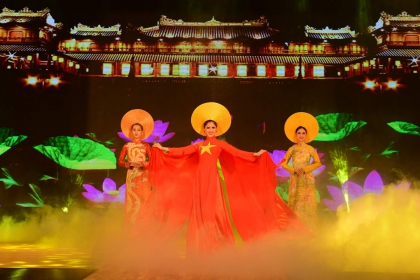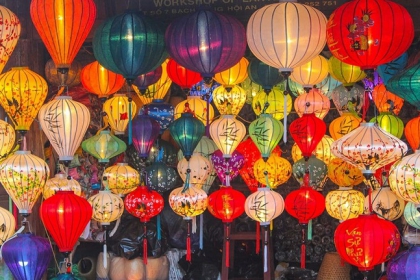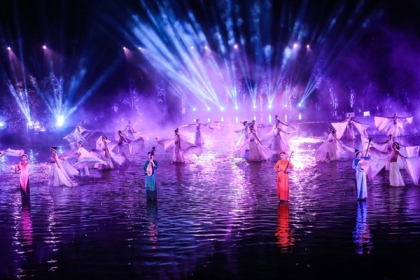Hue Palace Music
Hue Court Music is an intangible cultural heritage and the last legacy of Vietnamese court music. It covers the mainstream of Vietnamese court music in past dynasties and inherits all the essence of Vietnamese music with a history of more than a thousand years.
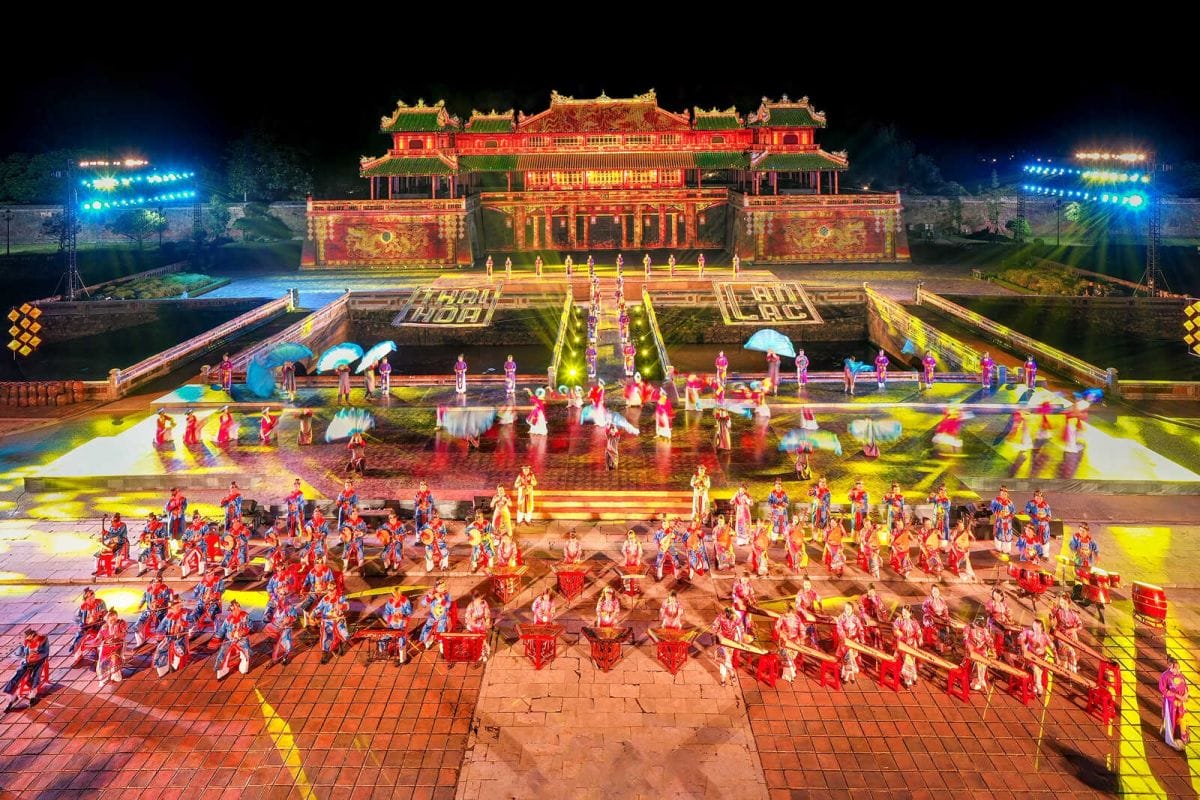
Therefore, Hue court music is also the national royal music art in Vietnam. As the name suggests, "Hue Court Music" contains three meanings: it existed in the Nguyen Dynasty, it existed in the Imperial City of Hue, and its artistic feature is elegant music that specifically serves royal etiquette.
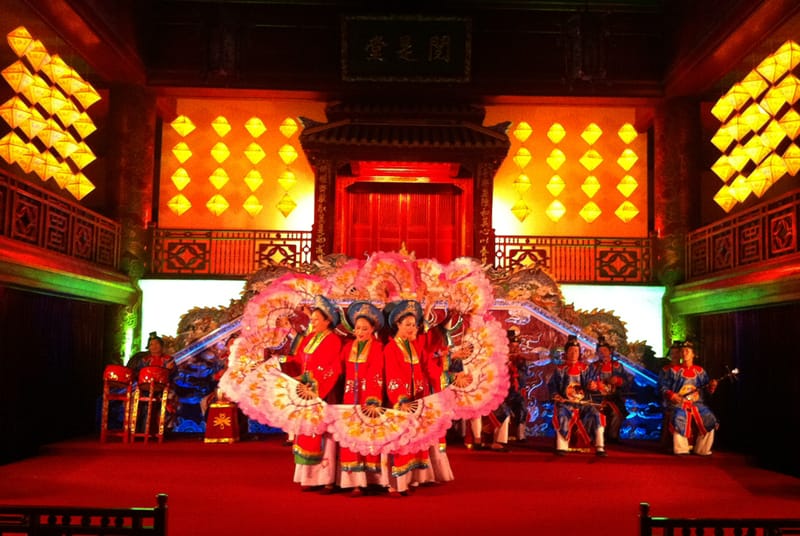
Historical introduction
In the early 19th century, the Nguyen Dynasty formally formed Hue court music. However, its origins date back to the 17th century, when the Nguyen kings carved their own kingdoms in the central and southern parts of the country. In the early days, it contained many categories, elements and the essence of northern music, which was brought from the north by Taoweizi when he went south to assist King Nguyen. The second half of the 19th century to the Tu Duc years (1848-1883) was the heyday of Hue court music. When the French troops landed at Da Nang to invade Vietnam, the court music went downhill.
After the August Revolution in 1945, Hue court music declined along with the collapse of the monarchy. From 1947 to 1948, Emperor Bao Dai’s mother, Empress Dowager Ci Gong, summoned court musicians to restore court music in Hue. Ngo Dinh Diem, the puppet president of Saigon, once funded the "Three" classical music and dance troupe and the palace ancient orchestra to entertain visiting foreign heads of state and diplomatic missions to perform palace music. Later, the "Three" classical music and dance troupe collapsed, and court music faced the crisis of being lost. In the 1980s, court music began to receive attention from the Ministry of Culture and local governments. In the 1990s, Hue Palace Music entered a stage of revival and was protected and gradually restored. This was marked by the establishment of the Hue Traditional Arts Troupe and the Hue Palace Traditional Theater.
The music scores and materials currently preserved are only part of the legacy of ancient Hue court music, and it is inevitable that errors or distortions will occur in the process of transmission through the generations.
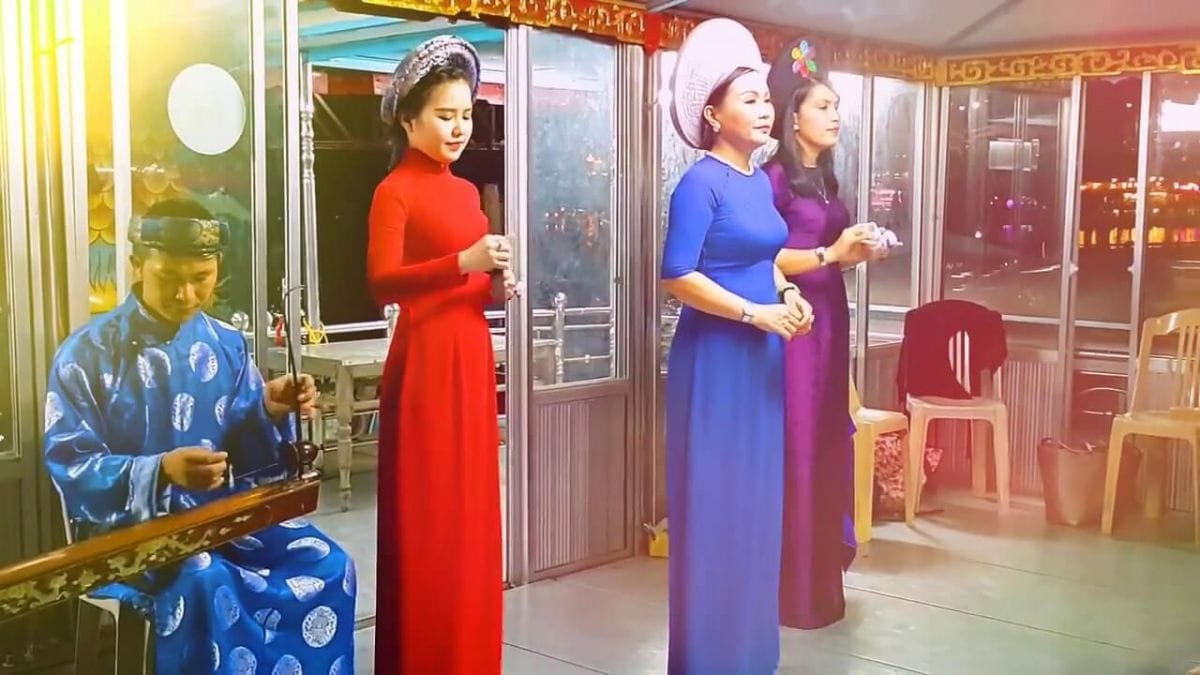
Art category
According to the usual meaning, "palace music" includes various musical art categories: music and related dance, vocal music, opera and folk arts, which are used for sacrifices, government affairs, diplomacy, festivals and royal entertainment activities. The name "Yale" introduced from China was used by all dynasties after the Hu Dynasty: sometimes it refers to music in general, sometimes it refers specifically to court music. The so-called "grace music" now refers specifically to court music. Therefore, the court music of the Nguyen Dynasty includes different categories such as sacrificial ceremonial music, court ceremonial music, court dance, chamber music and court drama.
In the past, Hue court music included many categories: ceremonial music for worshiping heaven, ceremonial music for worshiping the late emperor of the Nguyen Dynasty, Confucius, virtuous ministers and heroes, and five-character music for worshiping the God of Agriculture, City God, and She Ji, which were used in festivals and ceremonies or to meet with foreign countries. The great court music of envoys, the regular court music used for general royal ceremonies, the banquet music used for royal banquets, and the palace music dedicated to the inner palace.
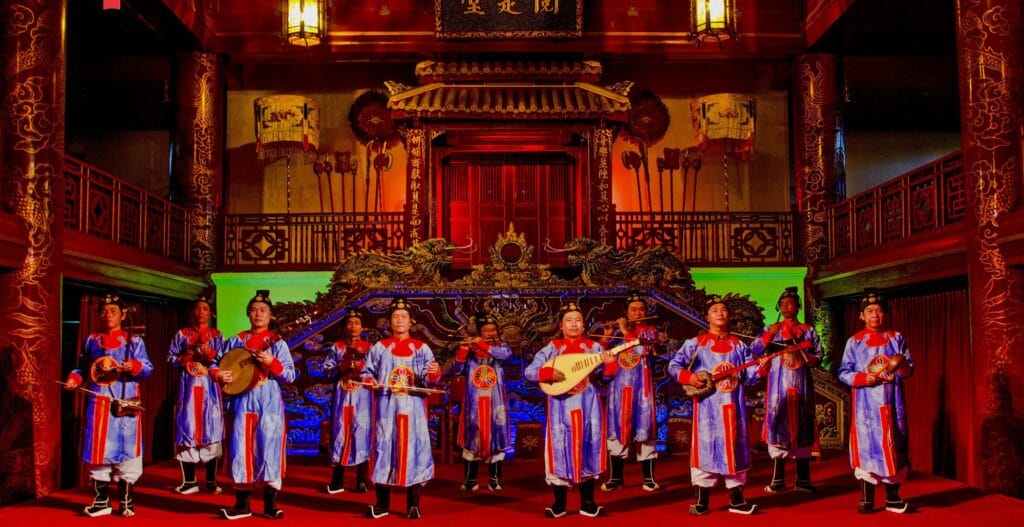
Hue court dances are used on different occasions. The following eleven dances have been preserved to this day: the Bayi dance for worshiping the heaven, the temple, the country, the late emperor and Confucius, and the six worship dances during festivals and celebrations. The three-star dance of fortune, wealth and longevity and the longevity dance of the Eight Immortals on Wanshou (the emperor’s birthday), Shengshou (the queen mother’s birthday), Xianshou (the concubine’s birthday), Tianchun (the prince’s birthday), and the auspicious dances in festive rituals to wish the people a prosperous country and a strong country. The Buddha dance is a battle to eliminate demons and monsters, the Four Spirits Dance has the plot of Kirin giving birth to a child, the female generals go out to commemorate the National Day, the royal banquet and the ceremony of receiving foreign envoys, the fan dance at the royal wedding banquet, the Three Kingdoms Journey to the West dance, the National Day public held in front of the Fu Wen Building The Six-Tatted Flower Horse Dance was performed at the party.
.png)
All court music has formal music scores. However, in its declining stage, the music score was seriously lost and only the lyrics were passed down orally. The musical scores that have been preserved to this day include: Shibenyu (including legato in 10 sets of scores such as Pinxue, Yuanxiao, Hu Guang, Lianlian, Pingban, Ximei, Qianqian, Spring Breeze, Dragon and Tiger, and Zouma), Dragon Lantern, Dragon Yin, Fu Liu, Xiaoqu, Three Wheels and Nine Turns (a tune for praying for good weather), Dengtan Palace, Single Dengtan, Dual Dengtan, Taiping ancient music, Mianmian tune, Mawu, Man tune and some chamber music, such as Nanping, Nanai, etc. .
The court orchestra of the Nguyen Dynasty also used a variety of tunes: Yale, Xuanle, Silk and Bamboo Ceremony Music, Xiaole, Dale, Guxiao Dale, Shaole, Bayin, Silk End, Silk bed, Sigu, etc.
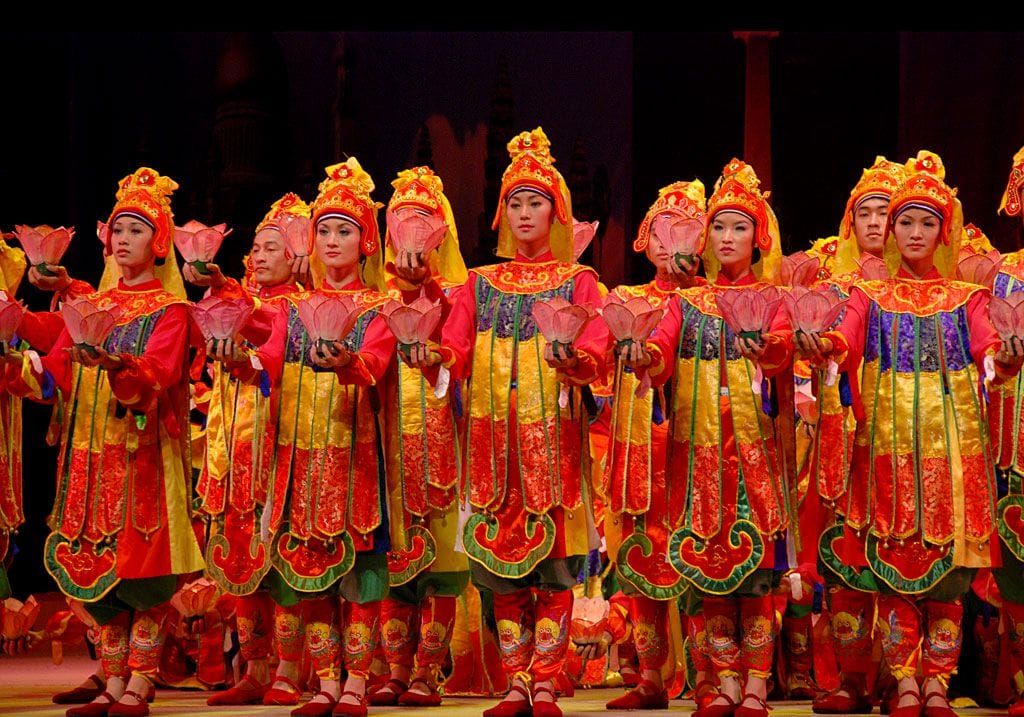
Today, Hue's court music has only small and large music preserved (most of the orchestras and music scores remain among the people), and court dances and accompanying instrumental music, vocal music, dances, chamber music, and folk ditties (which have been folklorized) and tunes influenced by Hue folk) and ancient court dramas. However, ancient palace dramas were almost lost. Music scores, lyrics and related materials are yet to be collected and organized.
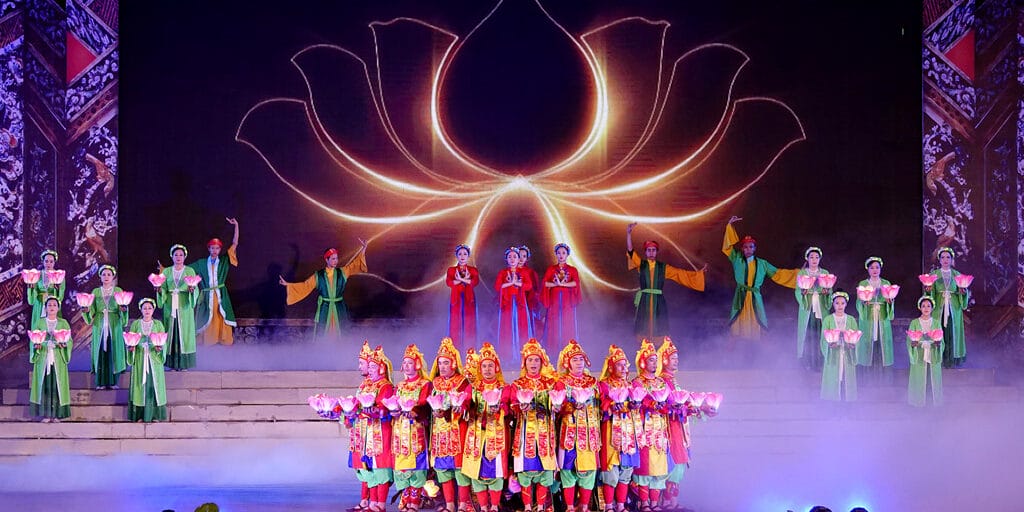
Achievements and Contributions
According to UNESCO’s review, among the rich and colorful traditional music categories in Vietnam, the only one with national significance is Hue Palace Music. Gagaku began in the Hu Dynasty (1400-1407) and flourished in the Nguyen Dynasty. It inherited the Thang Long court music art that had been formed centuries ago and developed to a new peak. Among the palace orchestras of past dynasties, the large music and small music of the Chen Dynasty are the most prominent, and a variety of artistic variations were created based on the Li Dynasty. Many common musical instruments used in Thang Long court music, such as yueqin, guzheng, pipa, two-stringed harp, huqin and tieqin, yunban tube, bangu or chimes of the Li Dynasty, chimes, taoxun, flute, bamboo qin, etc., and Combined with the eight Chinese music introduced in the later Le Dynasty, the dances of the past have been protected and developed (such as Six Offerings, Three Stars Birthday, Four Spirits and other programs). The lantern dance, cotton house, and Chen, Literary dance and martial dance of the Hu Dynasty). In addition, he also created a kind of chamber music (Hue solo), improved instrumental performance technology and ensemble art, inherited and developed the ancient northern drama art, and created a unique style of Kyoto opera, inheriting the rhythm of the Hong Duc reign of the Le Dynasty at the end of the 15th century. The system and music theory inherit Eastern concepts such as Yin Yang Bagua and foreign music theory concepts such as "Five Palaces and Seven Tones" used in Vietnamese general music and Thang Long court music.
.jpg)
Art category
According to the usual meaning, "palace music" includes various musical art categories: music and related dance, vocal music, opera and folk arts, which are used for sacrifices, government affairs, diplomacy, festivals and royal entertainment activities. The name "Yale" introduced from China was used by all dynasties after the Hu Dynasty: sometimes it refers to music in general, sometimes it refers specifically to court music. The so-called "grace music" now refers specifically to court music. Therefore, the court music of the Nguyen Dynasty includes different categories such as sacrificial ceremonial music, court ceremonial music, court dance, chamber music and court drama.
In the past, Hue court music included many categories: ceremonial music for worshiping heaven, ceremonial music for worshiping the late emperor of the Nguyen Dynasty, Confucius, virtuous ministers and heroes, and five-character music for worshiping the God of Agriculture, City God, and She Ji, which were used in festivals and ceremonies or to meet with foreign countries. The great court music of envoys, the regular court music used for general royal ceremonies, the banquet music used for royal banquets, and the palace music dedicated to the inner palace.
Hue court dances are used on different occasions. The following eleven dances have been preserved to this day: the Bayi dance for worshiping the heaven, the temple, the country, the late emperor and Confucius, and the six worship dances during festivals and celebrations. The three-star dance of fortune, wealth and longevity and the longevity dance of the Eight Immortals on Wanshou (the emperor’s birthday), Shengshou (the queen mother’s birthday), Xianshou (the concubine’s birthday), Tianchun (the prince’s birthday), and the auspicious dances in festive rituals to wish the people a prosperous country and a strong country. The Buddha dance is a battle to eliminate demons and monsters, the Four Spirits Dance has the plot of Kirin giving birth to a child, the female generals go out to commemorate the National Day, the royal banquet and the ceremony of receiving foreign envoys, the fan dance at the royal wedding banquet, the Three Kingdoms Journey to the West dance, the National Day public held in front of the Fu Wen Building The Six-Tatted Flower Horse Dance was performed at the party.
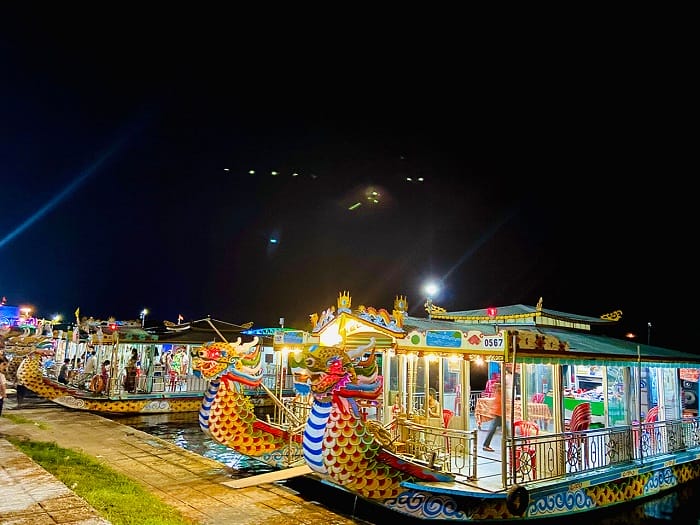
All court music has formal music scores. However, in its declining stage, the music score was seriously lost and only the lyrics were passed down orally. The musical scores that have been preserved to this day include: Shibenyu (including legato in 10 sets of scores such as Pinxue, Yuanxiao, Hu Guang, Lianlian, Pingban, Ximei, Qianqian, Spring Breeze, Dragon and Tiger, and Zouma), Dragon Lantern, Dragon Yin, Fu Liu, Xiaoqu, Three Wheels and Nine Turns (a tune for praying for good weather), Dengtan Palace, Single Dengtan, Dual Dengtan, Taiping ancient music, Mianmian tune, Mawu, Man tune and some chamber music, such as Nanping, Nanai, etc. .
The court orchestra of the Nguyen Dynasty also used a variety of tunes: Yale, Xuanle, Silk and Bamboo Ceremony Music, Xiaole, Dale, Guxiao Dale, Shaole, Bayin, Silk End, Silk bed, Sigu, etc.
Today, Hue's court music has only small and large music preserved (most of the orchestras and music scores remain among the people), and court dances and accompanying instrumental music, vocal music, dances, chamber music, and folk ditties (which have been folklorized) and tunes influenced by Hue folk) and ancient court dramas. However, ancient palace dramas were almost lost. Music scores, lyrics and related materials are yet to be collected and organized.
(1).png)
Achievements and Contributions
According to UNESCO’s review, among the rich and colorful traditional music categories in Vietnam, the only one with national significance is Hue Palace Music. Gagaku began in the Hu Dynasty (1400-1407) and flourished in the Nguyen Dynasty. It inherited the Thang Long court music art that had been formed centuries ago and developed to a new peak. Among the palace orchestras of past dynasties, the large music and small music of the Chen Dynasty are the most prominent, and a variety of artistic variations were created based on the Li Dynasty. Many common musical instruments used in Thang Long court music, such as yueqin, guzheng, pipa, two-stringed harp, huqin and tieqin, yunban tube, bangu or chimes of the Li Dynasty, chimes, taoxun, flute, bamboo qin, etc., and Combined with the eight Chinese music introduced in the later Le Dynasty, the dances of the past have been protected and developed (such as Six Offerings, Three Stars Birthday, Four Spirits and other programs). The lantern dance, cotton house, and Chen, Literary dance and martial dance of the Hu Dynasty). In addition, he also created a kind of chamber music (Hue solo), improved instrumental performance technology and ensemble art, inherited and developed the ancient northern drama art, and created a unique style of Kyoto opera, inheriting the rhythm of the Hong Duc reign of the Le Dynasty at the end of the 15th century. The system and music theory inherit Eastern concepts such as Yin Yang Bagua and foreign music theory concepts such as "Five Palaces and Seven Tones" used in Vietnamese general music and Thang Long court music.


